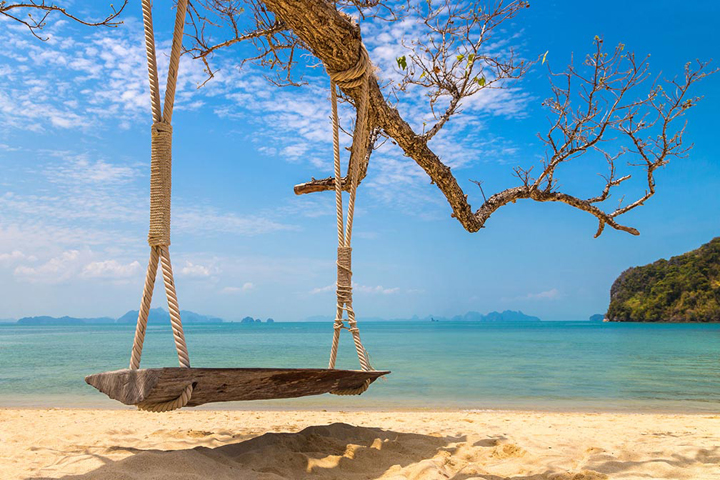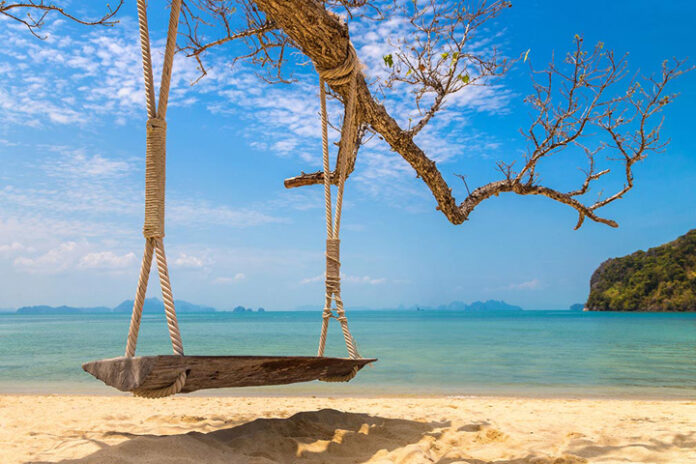
TOURISTS from the National Capital Region (NCR) eagerly trooped to Boracay Island on June 3, as government relaxed restrictions for residents of the region and four surrounding provinces traveling to areas under modified general community quarantine (MGCQ).
By June 5, tourist arrivals on the island reached 2,149 with residents from Metro Manila accounting for 64 percent of the three-day total, much to the joy of its residents and businesses. Malay Councilor Nenette Aguirre-Graf eagerly announced on her Facebook page on June 6, “Good news! 959 tourists arrived yesterday and booked in 83 resorts. Welcome and enjoy our Boracay!!!”
In the same breath, however, she said, “Hope it’s not close-open,” a constant fear among islanders who have had to endure a triple whammy of closures starting with the six-month rehabilitation of the island in 2018, the pandemic in 2020, and just as hotels and resorts were booked for the Holy Week, the Inter-Agency Task Force on the Management of Emerging Infectious Diseases (IATF) clamped down on leisure tourism for residents in NCR, Bulacan, Rizal, Cavite and Laguna, due to the surge in Covid-19 cases in these areas. Boracay used to record 1 million visitors from domestic markets, with the NCR being its main source.
But no sooner had the island reopened to tourism, an old problem was back—11 visitors from NCR were caught with fake RT-PCR negative test results, much to the consternation of the Malay LGU and the Department of Tourism (DOT). The latter had earlier haled to court six tourists from Metro Manila who had presented fake negative Covid-test results in January, three of whom were found to actually be positive for the disease.
Start and stop and start again
DUE to uncertain developments in the global arena, for now the Philippines remains closed to international leisure travelers. Balikbayans (homecoming Filipinos) are currently allowed but, vaccinated or not, they still need to quarantine for 14 days—10 in an accredited quarantine hotel, and four days at home. Domestic tourism is being firmly pushed, also a not-so-easy feat.
Tourism Secretary Bernadette Romulo Puyat acknowledges the difficulties of reopening leisure destinations and restarting tourism in general due to the constantly changing Covid-19 developments in the Philippines. “We were so ready for Holy Week. Many resorts in Boracay received a lot of bookings, then the surge happened. It was disappointing for many, of course, most of all for the tourism stakeholders there who were counting on the revenues. But the developments are so fast,” she says with a sigh and a shrug.
Romulo Puyat says in every IATF meeting, she constantly bats for the lifting of more and more travel restrictions and help tourism stakeholders to regain their footing. About 4.8 million tourism workers have been affected by the Covid-19 restrictions, either losing their jobs, or now working part-time. “But we always have to defer to the health experts, to the Department of Health (DOH). For instance, even as travel restrictions to MGCQ areas were lifted, we had to respect the wishes of the DOH that NCR-plus residents still [take the RT-PCR] test before [traveling]. This applies even if the tourist has been vaccinated.”
She has also forwarded a proposal for green lanes for vaccinated balikbayans that would cut their quarantine to seven days. This is still being studied by the IATF technical working group. She has also had to contend with a number of leisure destinations, like surfing capital Baler, which continue to remain firmly closed to tourism.
Confusion among LGU, DILG, IATF, DOT
VETERAN hotelier J., who oversees a number of properties in many parts of the country, points his finger at local government units (LGUs) and the Department of the Interior and Local Government (DILG) for the difficulties in kickstarting tourism. “It’s already been more than a year, it’s still the same banana—each LGU differs from the other [in terms of travel requirements]…. Does the DILG try to harmonize? There seems to be no progress on that front. On a marketing standpoint, how can the country sell itself as a destination when regulations change from one region to another?” J. requested that he not be identified as he didn’t want his hospitality company to encounter difficulties with the government.
“For instance, in Puerto Princesa, there are no protocols. They are still talking about drafting of protocols in contrast to those LGUs with established online registrations. When they finally came up with it, their website was always down, or no flights available per CAB [Civil Aeronautics Board]. In Nuvali, which is Biñan, Laguna, we have to follow the rules of Silang, Cavite [where our hotel is located], across a creek.”
An aviation source who also requested anonymity blames the confusing regulations issued by the IATF as among the reasons the tourism industry can’t really take off.
Just recently, the airline industry was confounded by IATF Resolution 118-A, which lifted the restrictions on NCR-Plus residents, regardless of age, allowing them to travel to MGCQ areas from June 1 to 15. In the same resolution, however, the IATF said, travel will be allowed to MGCQ areas “subject to an RT-PCR test-before-travel requirement for those below 18 and above 65, and other protocols and restrictions as may be imposed by the DOT and the [LGU] of destination.” It didn’t help that the DOT issued a similarly baffling news statement, merely copying the bewildering IATF provision. Did they mean NCR-Plus tourists between the ages of 18 and 65 no longer needed to present a negative RT-PCR test?
The aviation source said then, without any clarification, “the airline will have to follow the IATF resolution.” Eventually, as in more than five hours later, the DOT issued another news statement clarifying that the RT-PCR test requirement “still applies to travelers within the 18 to 65 age group, if so required by the LGU of destination.” Whew.
DOT’s own travel app has had to play catchup to the speedy turn of events. On Friday, it showed a number of destinations under modified enhanced community quarantine (MECQ) still open for NCR-Plus tourists.
A door opens, but a window closes
In a separate interview, Philippine Airlines spokesperson Cielo Villaluna said the carrier has had to deal with passengers presenting incomplete documents. “In some instances, they present fake RT-PCR tests. We have a tieup with the [Philippine National Police] Aviation Security Group, which has led to several apprehensions.”
On the upside, the reopening of domestic tourism has led to an “improvement in passenger loads to leisure destinations for PAL,” she underscored. “For our flights to Caticlan on June 10 totaling three, we had an average of 77 percent load factor. Passenger loads to Caticlan on previous days were slightly lower, which can be attributed to the fact that the green light for domestic tourist travel has just been given. Passenger loads to Puerto Princesa, Tagbilaran (Panglao Island), Siargao, etc., are building up gradually, with passenger volume to Caticlan taking the lead.”
Even as NCR-Plus residents are now allowed to travel to MGCQ areas, other leisure destinations, however, are again closed. The surge in daily Covid cases in Davao City, for instance, has resulted in the area being placed under MECQ from June 3 to 20. Earlier, the LGU had already started allowing Meetings, Incentives, Conventions, and Exhibitions (MICE) events, one of the key revenue earners for its tourism sector.
Although located in Davao del Norte, Samal Island’s resorts have been ordered closed by its mayor, as most visitors access it from the city. This is expected to impact some 130 resorts on the island, as only DOT-star rated hotels and those with staycation certificates are allowed to continue operating.
At the end of May, also declared hands-off from tourists until June 15 are Iloilo City and its heritage homes and palate-pleasing cuisine; and Zamboanga City and its popular pink-sand beach and resorts. These two have recently been put under MECQ.
It will be a long uphill climb for the tourism industry, and its footing will remain unsure while Covid-19 continues to wreak havoc in the country. Romulo Puyat believes the only way out of this uncertainty will be the vaccination of more Filipinos. “Our real goal, since we have already started our vaccination, is ‘no quarantine’ at all [for international tourists], and the lifting of domestic travel restrictions. But that can only happen if we have more vaccinated people.”
Image courtesy of Dreamstime.com
Read full article on BusinessMirror



